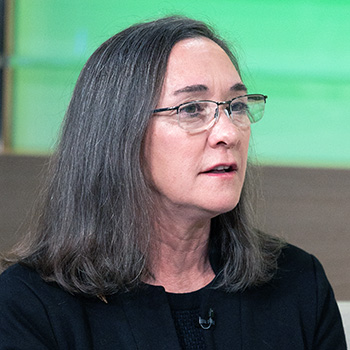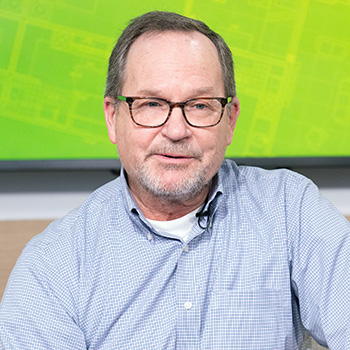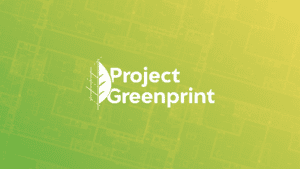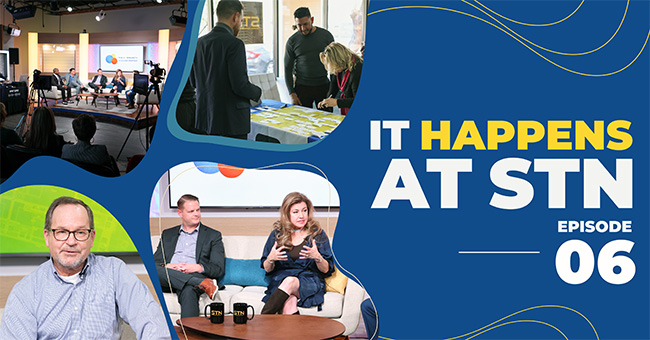The headlines are alarming. Almost daily we are reminded that our changing climate and population growth are having significant impacts on the water supply in the Desert Southwest.
But, how dire is the situation, actually? And, what do we need to know about it to stem the tide right now?
For March’s Project Greenprint Action Panel, Kyl Center for Water Policy at ASU’s Morrison Institute Director, Sarah Porter, and SRP’s Manager of Surface Water Management, Charlie Ester, join Project Greenprint host Kristen Keogh for a look beyond the splashy headlines and an examination of the future viability of Arizona’s water supply.
Project Greenprint is part of It Happens at STN, a local news hour dedicated to community growth and actionable solutions.
Each month, innovators share insightful commentary on the latest sustainability initiatives in the Greater Phoenix area.
Action Panelists
Action Panelists
Sarah Porter
Director – Kyl Center for Water Policy at Morrison Institute
Charlie Ester
Manager of Surface Water Management – SRP

Four Sources
First, let me explain that Arizona gets its water from four main sources of supply. We have water from the Colorado River, which runs along our western border. We have water from instate rivers. And the biggest system is the system that Charlie and SRP manage, that’s the Salt and the Verde Rivers [that] serve much of Phoenix.
We have reclaimed water, which is water [that] entered the wastewater treatment system, and then is treated up to a standard of quality that it can be used again. And finally, we have groundwater, which is water in the aquifers. Groundwater is a non-renewable resource in an arid place like Arizona. The water in our aquifers took thousands of years to get there because we just don’t get a lot of precipitation.
Two Big Challenges
The Colorado River system is really imperiled. We’re seeing declining flows. This is a hard problem to solve because so many people depend on it. Some 40 million people, 29 tribes in seven states, and Northern Mexico. So, we’re in negotiations on what to do about the Colorado River. Really the only thing we have control over is to take less out – to have shortages. We are in our second year of shortages this year. Next year, I expect that there will be shortages that people living in cities start to get messages about and maybe feel a little.
The other big problem is not in the cities, not in the Phoenix to Tucson area, but in the rural areas where there are many communities that only, or primarily, depend on groundwater. We’re seeing large-scale agriculture move into some of those places and greatly increase the amount of water that’s being taken out of the aquifers. That means that some people’s wells go dry and that those communities don’t have the long-term water supplies that they thought they had.
Population Paradox
Population growth, per se, is not a driver of the water challenges that we face in the state. In fact, in the last 20 years, the Phoenix to Tucson area has increased its population [by] about 45%, but without any particular efforts, water demand only went up 14%. So, to some extent, we have decoupled population growth and economic growth from increasing water demand.
The answer is to continue to work toward efficient use of water, and to grow where we have water, through good management. We really can still continue, if that’s what the community wants, to add population. We can add to the economy and we can still really prosper and have a good quality of life given these challenges that we have with water.
Searching for Solutions
We really can solve these issues. We have the Arizona Water Blueprint online. There’s just a wealth of information. The way to solve these issues is by making good decisions about how we manage water. That’s the easiest, best way to solve these. And the way we get there is by having more people learn about what’s going on with water and get engaged.
Get engaged. Lots of cities are looking at programs to encourage more conservation and efficiency. To get where we need to get is going to require investment. So thank your council member, if your water rates go up. These kinds of investments are going to be the things that make our city, our cities continue to be water resilient.
The one thing that we can all do is to reduce the amount of water we use outside. Almost anyone that has any kind of outside area that they water needs to [make sure] we are reclaiming almost all the water that goes down the drain. It’s good to conserve anywhere. Conserve water outside.

Good News
SRP is providing a reliable and adequate water supply for the Phoenix area for well over a hundred years. We always plan for dry conditions because in order to best manage your water supply, you plan for the worst and hope for the best.
This year was no different from that. We were going into this winter with lower reservoirs. We were planning for a dry winter [and] prepared for that. It just started raining and raining and snowing in the mountains. It’s been doing so tremendously. At this point, the snow pack up in the mountains is the greatest that it’s been in the last 30 years or so. We are expecting our reservoir system to essentially be 100% full at the end of the runoff season, which should occur sometime in late March or early April. So things are really good.
Rural Concerns
I do want to point out that the Salt River Project serves, the majority of the Phoenix area, but it’s the core part. So if you depend on, [or] if you live in that part of our service area, the water supply is in great shape. Outside of our service territory, it’s back to the issues that Sarah was talking about.
Legacy and Leadership
I’m certainly not gonna tell you there are not water issues that we need to face. But Arizona has a rich legacy of having water leadership that faces these challenges and finds solutions to them.
I would tell all the business leaders that this is a wonderful place to invest and grow your business. We have a reliable water supply. We have some challenges. But we will address those challenges and we will continue to have a supply of water to meet the needs of the residents of the greater Phoenix area.




